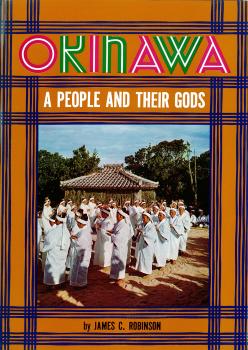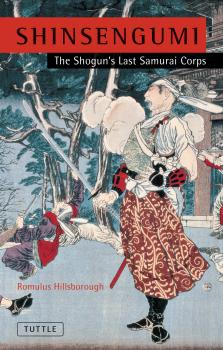ТОП просматриваемых книг сайта:
Историческая литература
Различные книги в жанре Историческая литература, доступные для чтения и скачиванияАннотация
Violent, sensual, and seemingly un-Japanese, the stories in Season of Violence nevertheless depict Japanese teenagers of the present in compulsive but often unconscious revolt against the moral codes of «old Japan.» Yet these stories tell of youth who offer no real, modern morality to replace the old—only the anti-morality of indiscriminate sex, brutality, and living for today's pleasures and sensations. These are stories of teenagers who came to be known as Taiyozoku— the Sun Tribe.Season of Violence won for its young author, Shintaro Ishihara, Japan's coveted Akutagawa Prize. Thus, Season of Violence is a good deal more than fast-moving, forcefully written fiction; it is vital social commentary on contemporary Japan which gives unexpected dimension to the traditional cardboard image of the Japanese student as somber, diligent, and obedient.Ishihara's stories of Japanese who were born in the ashes of war and defeat and raised in the fast-moving world of the postwar boom are stark accounts of a period when the values of the past have been discarded for misguided materialism and pleasure-seeking.
Аннотация
Although the peaceful struggles of Mahatma Gandhi are well known in the West, the armed resistance of many Indians during World War II is far less understood; this epic drama ads an important layer to the history of India and the British Empire. The east Asian battlefronts serve as the backgrounds for this story of the attempt by patriotic Indians to drive the British out of their Motherland and gain independence; of the fanatic ambition to attain this goal by the man who chose to be called «Nataji» (the leader), Subhas Chandra Bose; and of the Indian Independence League, ingratiating themselves to the Japanese to further their end while the Japanese happily appeared to reciprocate to gain the Indians' support against the British.The action and drama that filled this battle within the larger scale war is vividly told in this first person narrative by one who remembers what it feels like to have closely escaped death and is grateful to be alive to tell about it. Author Sivaram, who enjoyed the confidence of Netaji Bose and was appointed by him to several positions of responsibility during the Free India campaign, is uniquely qualified to tell this stirring tale.
Аннотация
Okinawa is a fascinating account of the most unusual religious practices of the Okinawan people.Subject throughout their long history to many foreign influences, the Okinawan people still retain to a remarkable degree a strong reverence for their prehistoric animistic beliefs. nevertheless, in accommodating themselves to the infiltration of Buddhist, Confucian, Shinto, and Christian influences they have been most receptive, with the result that what might seem confusing, illogical, and inconsistent to others, is quite compatible to them.This brief but authoritative account not only correlates present-day practices with their historical development, but also takes notice of current trends and likely future developments in Okinawa.The text is enhanced with sixteen significant photographs and with nine full-page maps to guide sightseers to Okinawa's most culturally significant places.
Аннотация
Condition Green: Tokyo was the warning posted almost daily at the gates of U.S. bases in Japan during May, 1960, when the US-Japan Security Treaty was revised and extended. Communist-led riots and demonstrations opposed to the treaty made it unsafe for Americans on the streets of Tokyo. Homes were burned, autos overturned, government offices ransacked. Americans were attacked, a leading politician assassinated, hundreds injured, and many killed. The revised treaty passed the Diet, but Leftist discontent forded the Prime Minister to resign.U.S. Intelligence learns that Japanese Communists plan to seize control of the government on May Day 1970, but due to a rising tide of anti-American feelings and bloody anti-government rioting, is powerless to act. Only by dramatic and positive proof of a Red betrayal could the U.S. hope to turn the tide of popular sentiment against the Communists. Capt. Joe Holiday is sent on an 11th-hour reconnaissance flight over Communist China and Russia in hope of obtaining such proof–and obtain it he does. But to get the evidence into the proper hands, he must evade a swarm of Soviet fighters with his unarmed aircraft, and run a last deadly gauntlet of Soviet Surface-to-Air Missile sites.
Аннотация
With dozens of classic miniature Japanese woodblock prints and informative text, this Japanese art book is an essential for print collectors.Of the many genres of ukio-e, perhaps the least known is that of the diminutive surimono produced by Utamaro, Kiyonaga, Hokusai, Hiroshige, and others. They were the small, relatively little-known woodblock prints of the Tokugawa era, produced in smaller numbers and better quality than the ukiyo-e prints as we know them today.This beautifully illustrated book, a collector's item, is based on the author's private collection of more than sixty years. It is a unique introduction to the background and aesthetic appreciation of the rare and elegant art form. Included in the pages are notes on technique, terminology, surimono collecting and commissioning, as well as biographies of known surimono artists, and a detailed list of surimono catalogs and exhibitions. The text is supplemented by 33 color plates, Index Glossary, and Annotated Bibliography.
Аннотация
Shinsengumi: The Shogun's Last Samurai Corps is the true story of the notorious samurai corps formed in 1863 to arrest or kill the enemies of the Tokugawa Shogun. The only book in English about the Shinsengumi, it focuses on the corps' two charismatic leaders, Kondo Isami and Hijikata Toshizo, both impeccable swordsmen. It is a history–in–brief of the final years of the Bakufu, which collapsed in 1867 with the restoration of Imperial rule. In writing Shinsengumi, Hillsborough referred mostly to Japanese–language primary sources, including letters, memoirs, journals, interviews, and eyewitness accounts, as well as definitive biographies and histories of the era.The fall of the shogun's government (Tokugawa Bakufu, or simply Bakufu) in 1868, which had ruled Japan for over two and a half centuries, was the greatest event in modern Japanese history.The revolution, known as the Meiji Restoration, began with the violent reaction of samurai to the Bakufu's decision in 1854 to open the theretofore isolated country to «Western barbarians.» Though opening the country was unavoidable, it was seen as a sign of weakness by the samurai who clamored to «expel the barbarians.»Those samurai plotted to overthrow the shogun and restore the holy emperor to his ancient seat of power. Screaming «heaven's revenge,» they wielded their swords with a vengeance upon those loyal to the shogun.They unleashed a wave of terror at the center of the revolution—the emperor's capital of Kyoto. Murder and assassination were rampant. By the end of 1862, hordes of renegade samurai, called ronin, had transformed the streets of the Imperial Capital into a «sea of blood.»The shogun's administrators were desperate to stop the terror. A band of expert swordsmen was formed. It was given the name Shinsengumi («Newly Selected Corps»)—and commissioned to eliminate the ronin and other enemies of the Bakufu. With unrestrained brutality bolstered by an official sanction to kill, the Shinsengumi soon became the shogun's most dreaded security force.In this vivid historical narrative of the Shinsengumi, the only one in the English language, author Romulus Hillsborough paints a provocative and thrilling picture of this fascinating period in Japanese history.
Аннотация
This book is a critical study of ten postwar Japanese novels that focus on man's search for identity in the modern world.With the presentation of the Nobel Prize for Literature to a Japanese author in 1969, the international significance of modern Japanese literature was formally recognized by the Western world. The best indication of the West's present keen appreciation of modern Japanese literature is the large number of excellent translations that have appeared in recent years.In Crisis in Identity a common theme—modern man's search for identity—has been traced through ten major novels. This quest takes place n conjunction with wartime cannibalism, the atomic bombing of Hiroshima, expatriation, senile eroticism, and personal and social alienation. The works in which these are depicted include:Diary of a Mad Old Man (Junichiro Tanizaki)House of the Sleeping Beauties (Yusunari Kawabata)Black Rain (Masuji Ibuse)Fires on the Plain (Shohei Ooka)THe Temple of the Golden Pavilion (Yukio Mishima)The Woman in the Dunes (Kobe Abe)A Personal Matter (Kenzaburo Oe)If you have not yet read these novels, Crisis in Identity will provide a stimulating introduction to them; if you have, it will reveal new insights.
Аннотация
The cannibal kings of Fiji are gone, but their spirit lives on. Cannibalism in Fiji and the gruesome «earth ovens» are gone; the kai vavalagi, «the men from over the horizon,» changed that, bringing their own brands of justice tempered by the musket, disease, and dissoluteness.There were giants in those days, Fijians and Westerners alike. This gripping and unique history of Fiji by Stanley Brown, a well-known Fiji «old-timer» and historian, is woven around the lives of eleven Western «giants,» Europeans and Americans who had the greatest impact on each epoch. Not all these Westerners lived to tell the tale.This stirring narrative is replete with hair-raising accounts of battles and brutality. One incident of supreme savagery was reported by Lockerby, a famous trader, who reported that more than three hundred fifty old men, women and children were butchered after a battle: «As the canoes sallied back tot he mainland coast in the evening, the reddening sky silhouetted the bodies of children hanging from the mastheads.» The earth–ovens were well–fueled that evening. But time and the tides of civilization tame the savage beast, and today Fiji is busy developing its economy, but the old accounts and stories still ring true.










